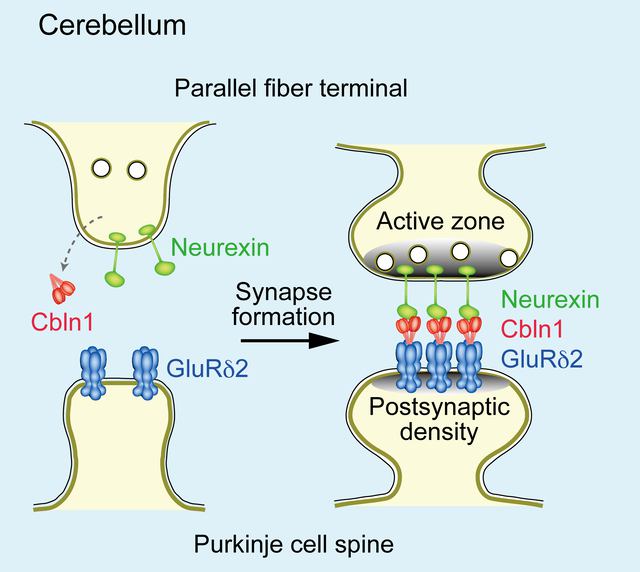Elucidation of molecular mechanism of neuronal network formation in the brain.
Synapse formation is the key step in the development of neuronal networks. Precise synaptic connections between nerve cells in the brain provide the basis of perception, learning, memory, and cognition. Despite the wealth of information vitro, the fundamental questions about how glutamatergic synapses are formed in the mammalian brain remain unanswered. Glutamate receptor (GluR) δ2 is essential for cerebellar synapse formation in vivo. However, it remains unsolved how GluRδ2 regulates synapse formation. Uemura et al. in Mishina's lab revealed that the trans-synaptic interaction of postsynaptic GluRδ2 and presynaptic neurexin through secreted Cbln1 mediates synapse formation in the cerebellum. Triad of GluRδ2, Cbln1 and neurexin is a novel form of trans-synaptic cell adhesion complex essential for excitatory synapse formation. These findings will greatly contribute to clarify the molecular basis of synapse of synapse formation in the brain.
Program member
Masayoshi Mishina (Department of Functional Biology, Graduate School of Medicine)

Trans-synaptic interaction between postsynaptic GluRδ2 and presynaptic neurexin through Cbln1 mediates cerebellar synapse formation.
